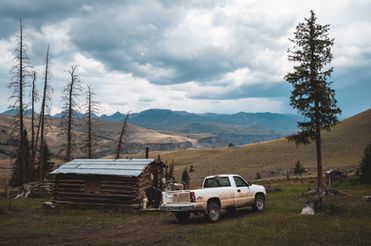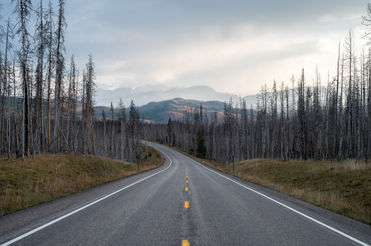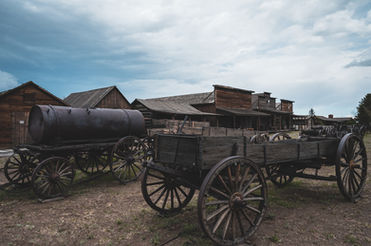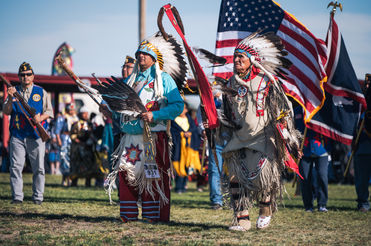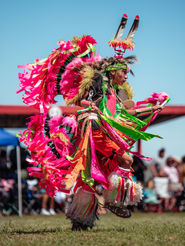

Wyoming
Wyoming is known for its vast expanses of rugged wilderness and sparse population. With an average of just 5.85 people per square mile, it is the least densely populated state in the United States after Alaska. Despite its small population, Wyoming offers a rich diversity of natural beauty, historical significance and cultural identity. The state's economy is largely based on the extraction of natural resources, such as coal, gas and oil, and the tourism industry, which is driven by the natural beauty of its parks, such as Yellowstone and Grand Teton. The state's history is deeply rooted in the myths of the frontier and the cowboy, which continue to shape its cultural identity to this day. Wyoming often refers to itself as the "Cowboy State" and is also known for being one of the most conservative states in the U.S, with the Republican Party reached a majority of nearly 70 percent in the 2020 election.
Wyoming is a largely rural state, with a small population dispersed across its vast land area. The towns and cities in Wyoming are generally small and closely tied to the state's history and economy, which have been shaped by mining, ranching, and tourism. The architecture of many towns and cities in Wyoming reflect their origins as mining and frontier towns, with many buildings – particularly in the city centers – dating back to the late 19th and early 20th centuries. Many of these towns and cities have a strong sense of community, and residents are often closely connected to the land and the natural resources that the state is known for. In recent decades, towns near Wyoming's national parks, such as Cody or Jackson, have become real tourist hotspots that can be very crowded, particular in the summer months. In addition, more and more affluent people have settled in these areas, attracted by the quiet and wide open spaces Wyoming has to offer - and no doubt by the low taxes the state charges. However, not everyone likes this development, as is not only causing real estate prices to skyrocket, but also changing the townscapes and the general way of life.
Landscape
From the rugged peaks of the Rocky Mountains to the arid sagebrush steppe and rolling grasslands of the Great Plains, the state of Wyoming offers varied landscapes. Driving across the country, along roads that stretch as far as the eye can see, winding up steep mountainsides or carving through impressive canyons, one gets a first glimpse of the state's diverse landscapes and sheer size. However, what every visitor will notice are the many fences that run along the roads and across the landscape. Their presence dates back to the beginnings of ranching in Wyoming when the open range system allowed ranchers to graze their cattle freely over large areas of land. As the number of cattle on the open range increased and the demand for beef grew, conflicts arose between different ranchers and farmers, who wanted to fence off their land to protect their crops and pastures from the roaming cattle of their neighbours. The invention of barbed wire around this time made fencing much cheaper, contributing to the implementation of the "fence-out" regulation. This rule states that the landowner is responsible for fencing his property if he does not want livestock on it. It is still in effect today and applies to public lands as well, resulting in the many fences seen across Wyoming. Of course, the many fences also have an impact on wildlife. While most species, such as moose, elk, antelope, or deer can pass either over or under the fence, but injuries that can result in death occur frequently.
National Parks
With Yellowstone and Grand Teton National Parks, Wyoming is home to two extraordinary and world-renowned national parks, each offering a unique and breathtaking landscape as well as an abundance of wildlife. Yellowstone, founded in 1872, was the world's first modern national park, and offers a wealth of insight into the rise of conservation in the United States. It is home to geysers, hot springs, and other thermal features, as well as the largest concentration of mammals in the lower 48 states, including bison, elk, and bears. Teton National Park, on the other hand, is known for its dramatic mountain range, pristine mountain lakes and the many moose that roam here. Both parks are visited by millions of tourists annually, providing a significant economic boost to the surrounding communities and businesses.
History
Wyoming, named for the Algonquin word meaning "large plains," is steeped in a rich history and mythology of the American frontier and cowboy. This legacy remains a defining aspect of the state's identity and is prominently celebrated through museums, historical markers, and outdoor exhibits. The state's history is often focused on the pioneers who traveled along the Oregon Trail, which passes through southern Wyoming, and the lives of the early settlers. Additionally, the history of legendary figures such as mountain men John Colter, Jim Bridger to name a few, as well as the notorious outlaw Butch Cassidy, are also prominently featured in the state's historical narrative. However, it is worth noting that the history and culture of the indigenous population and the brutal wars waged against them are not as heavily emphasized, although there are some smaller exhibitions on this topic nowadays.
Patriotism
In the United States, patriotism is a strong and prevalent value, particularly in conservative states like Wyoming. It is common to hear the national anthem or the Pledge of Allegiance at public events, as well as prayers that incorporate the well-being of the nation. This is particularly evident on holidays like Independence Day, where displays of patriotism are especially prominent. This national holiday, which takes place at the 4th of July, is celebrated across the country with major festivities and parades, with a special parade taking place in Cody, Wyoming. Founded by none other than the famous Buffalo Bill Cody, the town continues to honor his legacy until today, and the Fourth of July parade is no exception; almost everything is about cowboys and the Wild West. During the parade, several commentators tell patriotic stories and never get tired of emphasizing that the U.S. is the greatest country in the world. The event is also attended by locals and visitors who show their patriotic side by wearing clothes with the American flag or colors.
Eastern Shoshone Powwow
During my fieldwork, I had the opportunity to attend a powwow in Fort Washakie, located on the Wind River Reservation and organized by the Eastern Shoshone Tribe. Powwows, as they are practiced today, are cultural events that emerged in the late 19th and early 20th centuries as a means of preserving and celebrating Native American culture through singing, dancing, and drumming. The powwow I visited was a competitive one, featuring a variety of dance styles such as Traditional, Grass, Buckskin, Prairie Chicken, and Fancy, which were separated by gender. The event was accompanied by different drumming and singing groups, who also participated in competitions. The costumes and dances of the men were more elaborate and extravagant, while those of the women were more reserved. The dances were performed within a large circle, and several times a day, a grand parade was held, featuring all the dancers, as well as the tribal elders, dignitaries, and veterans. The parade was particularly striking due to the dense atmosphere created by the deep drums, emotional singing, and colorful dancers.


































